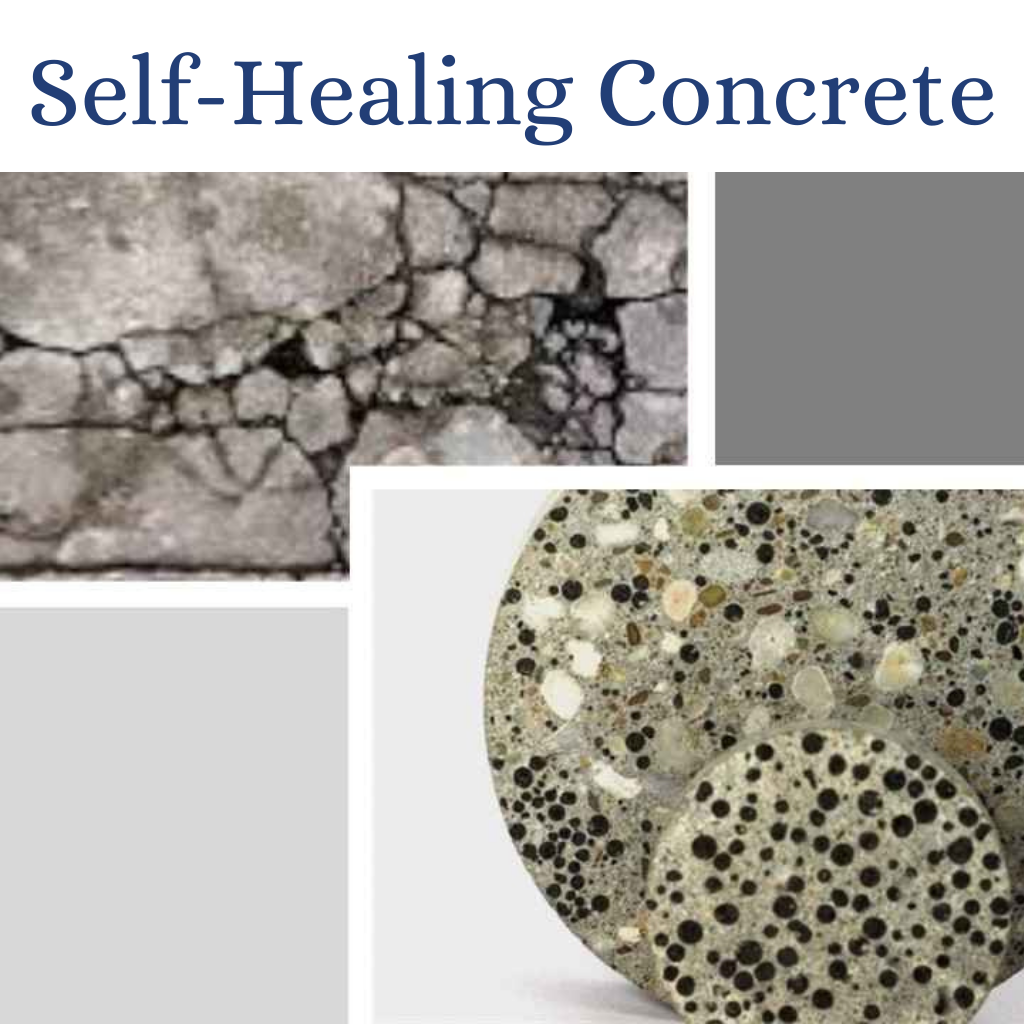The building sector is always changing thanks to inventions that increase the strength, sustainability, and affordability of structures. Self-healing concrete is among the most revolutionary developments in recent years. This groundbreaking substance could enhance infrastructure durability, reduce maintenance costs, and extend building lifespans. At Zenith Constructions and Developers, we continually seek cutting-edge technology that will shape the future of the construction industry. This blog post will explain self-healing concrete, its operation, and why it is the material of the future for long-lasting structures.

What is Self-Healing Concrete?
Concrete is one of the most widely used building materials in the world, but it comes with a significant drawback: fractures. Environmental factors such as moisture, temperature fluctuations, and pressure can cause these cracks to widen over time, leading to costly repairs and compromising structural integrity.
Self-healing concrete is an advanced type of concrete designed to automatically repair these cracks, similar to how human skin heals after a cut. This innovative material incorporates various self-repairing mechanisms, including autogenous healing, encapsulated polymers, and bacteria-based healing, which enhance the durability and resilience of concrete.
One of the most popular building materials in the world is concrete, yet it has a significant flaw: fractures. Environmental elements including moisture, temperature fluctuations, and pressure can cause these fissures to widen over time, necessitating expensive repairs and causing structural instability. In the same way that human skin heals itself after a cut, self-healing concrete is a sophisticated type of concrete that can automatically patch fissures.
By combining many self-repairing processes, including autogenous healing, encapsulated polymers, and bacteria-based healing, this breakthrough increases the durability and resilience of concrete.
How Does Self-Healing Concrete Work?
Self-healing concrete comes in a variety of forms, each using a unique set of technologies to patch cracks as they appear. Here are a few of the most popular techniques:
1. Bacteria-Based Healing
Among the more intriguing and interesting approaches is this one. The concrete mixture contains calcium lactate and unique bacteria (Bacillus species). The bacteria produce limestone (calcium carbonate) when they activate and eat calcium lactate when fractures emerge and water seeps into the spaces. This stops additional damage by naturally filling and sealing the cracks.
2. Encapsulated Healing Agents
Using this technique, microscopic capsules containing binding agents or healing agents, such as epoxy resins, are embedded into the concrete. These capsules burst open to release the healing chemical, which solidifies and closes out the crack.
3. Autogenous Healing
Concrete has a limited capacity for self-healing by nature. This happens when water combines with the mix’s unhydrated cement particles to create a new binding substance that seals minor fissures. However, in contrast to encapsulated or bacteria-based healing techniques, this procedure is sluggish and has limited efficacy.
Benefits of Self-Healing Concrete
Self-healing concrete is revolutionizing the building sector with its many benefits:
1. Enhanced Durability
Because of their deterioration and cracking, traditional concrete structures need regular repair. Self-healing concrete automatically fixes minor cracks before they become serious problems, extending the life of roads, bridges, and structures.
2. Cost Savings on Repairs & Maintenance
Fixing and preserving fractured concrete is one of the most difficult tasks in infrastructure management. Over time, self-healing concrete saves time and money by reducing the need for regular human repairs.
3. Increased Sustainability
Self-healing concrete reduces material waste and carbon emissions by minimizing the need for reconstruction and repair. Because of this, it’s a great environmentally friendly option for sustainable building.
4. Improved Structural Safety
Weakened buildings, corrosion of steel reinforcements, and water ingress can result from concrete cracks. Self-healing concrete lowers the chance of building failures while improving safety and dependability.
5. Waterproofing & Protection
For water-related constructions like dams, canals, and tunnels, where fissures may cause water to leak, self-healing concrete is very helpful. Long-term water resistance is ensured by its capacity to self-seal cracks.
Applications of Self-Healing Concrete
This innovative technology is gaining popularity in various construction sectors, including:
- Bridges & Highways: Prevents cracks from expanding, reducing frequent repairs.
- Residential & Commercial Buildings: Increases durability and reduces maintenance costs.
- Dams & Tunnels: Enhances water resistance and structural integrity.
- Historical Monuments: Preserves aged structures without excessive repairs.
Future of Self-Healing Concrete
It is anticipated that self-healing concrete would become more affordable and extensively used in the building sector as research and development continue. Interest in integrating this technology into sustainable projects and smart cities is already evident among governments and corporate developers.
We are getting closer to a time when infrastructure and buildings will sustain themselves with little assistance from humans thanks to inventions like self-repairing polymers and concrete that has been impregnated with bacteria. In order to build durable, resilient, and sustainable constructions, we at Zenith Constructions and Developers are thrilled to incorporate such cutting-edge technologies into our projects.
Conclusion
Self-healing concrete offers unparalleled durability, sustainability, and cost savings, making it a major advancement in contemporary building. It has the potential to revolutionize the way we construct and maintain infrastructure because of its capacity to automatically patch cracks.
Our goal at Zenith Constructions and Developers is to investigate and use cutting-edge building materials that produce structures that are more robust, secure, and effective. Self-healing concrete will surely influence future development as it becomes more widely used, guaranteeing that infrastructure and buildings will endure for many years.
